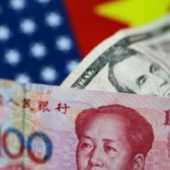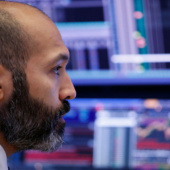Investment manager’s five- and ten-year returns appear to be on the low side compared to other large Canadian pensions, but not dramatically so

Article content
The Alberta government fired the chief executive and entire board of directors of Alberta Investment Management Co. (AIMCo) last week, citing rising costs without an equivalent increase in returns at the $160 billion investment manager. But were AIMCo’s results and costs out of line with other major Canadian investment managers? The Financial Post’s Naimul Karim explores the question.
Advertisement 2
Article content
How has AIMCo performed?
AIMCo reports both its overall results and those of its balanced fund. The total fund reflects the aggregate of all client accounts, including those who exclusively choose fixed-income and money market investments to achieve their objectives. The balanced fund, meanwhile, only includes client accounts that invest across a range of asset categories, requiring AIMCo to seek higher returns.
In 2023, AIMCo delivered an investment return of eight per cent or $8.9 billion on the balanced fund. While this was lower than its benchmark of 9.3 per cent, the fund’s former chief executive Evan Siddall — who was among those purged last week — described the performance as a “notable accomplishment” in AIMCo’s annual report, considering the “non-stop geopolitical crises,” high inflation and interest rates uncertainty. AIMCo’s total fund reported a return of 6.9 per cent for 2023, which also came up short of the benchmark of 8.7 per cent.
The longer-term performance of AIMCo’s balanced fund has been better relative to its benchmarks: Its 10-year return of 7.3 per cent has outperformed the 6.9 per cent benchmark while the five-year net return of 6.6 per cent also topped the benchmark of 6.5 per cent.
Article content
Advertisement 3
Article content
In the first half of 2024, the balanced fund has so far returned 5.6 per cent and the total fund 5.4 per cent
How does that compare to other major pension funds?
On an absolute basis, AIMCo’s five- and ten-year returns appear to be on the low side compared to other large Canadian pensions, but not dramatically so.
For instance, at the end of their 2023 fiscal years, the Canadian Pension Plan‘s (CPP) five-year net return was 7.7 per cent and its 10-year net return was 9.2 per cent. The Ontario Teachers’ Pension Plan posted returns of 7.2 and 7.6 per cent; the Caisse de dépôt et placement du Québec clocked in at 6.4 and 7.4 per cent; the Public Sector Pension Investment Board reported returns of 7.9 and 8.3 per cent; and the British Columbia Investment Management Corp. reported net returns of 7.5 and 7.8 per cent.
While most of the funds posted better absolute returns than AIMCo, some analysts cautioned that funds have different strategies that depend upon the needs of their members.
“For example, a fund like CPP will have a fairly aggressive portfolio allocation with close to 70 to 80 per cent invested in equities,” said Sebastien Betermier, a finance professor at McGill University. “But Ontario Teachers, which manages the liabilities for the teachers in Ontario, may tend to take on less risk by investing more in bonds.”
Advertisement 4
Article content
Relative to their benchmarks, the results are more nuanced. Ontario Teachers’, for example, missed its five-year benchmark of 8.5 per cent, while the Caisse was well ahead of its benchmarks of 5.9 per cent and 6.5 per cent.
AIMCo also had a terrible year in 2020, when its total fund reported a net return of 2.5 per cent, compared to its benchmark of 8 per cent, something that still drags on its longer-term tallies.
“They reported outsized losses related to a volatility trade … that was unusual and something that we had not seen across the peer group,” said Dafina Dunmore, a senior director at Fitch Ratings.
What about the cost increases?
Alberta attributed its decision to clean house at AIMCo to rising costs at the investment manager.
“The corporation has seen significant increases in operating costs, management fees and staffing without a corresponding increase to return on investment,” it said in a news release, adding that from 2019 to 2023, AIMCo’s third-party management fees increased by 96 per cent while salary, wage and benefit costs increased by 71 per cent.
Advertisement 5
Article content
Over the same period, it said, AIMCo managed a smaller percentage of funds internally but saw employee count rise by 29 per cent.
According to its annual report in 2023, the broader AIMCo team grew by 17 per cent that year alone.
Not all asset managers report expenses the same way, but others showed a general increase in expenses over the same time period.
Operating expenses at CPP Investments, for example, rose to $1.54 billion in fiscal 2023 from $1.2 billion in 2019, an increase of approximately 28 per cent, while personnel costs rose by 29 per cent to $1.038 billion.
At the Ontario Teachers’ Pension Plan, administrative expenses for investing rose to $829 million from $615 million, or 34.8 per cent over the same time frame.
Betermier urged caution when analyzing the costs and compensation at Canadian funds, which in general have a reputation for efficiency.
“The fact that AIMCo has paid managers high salaries, well, that’s something that you see across the board,” he said. “That’s something that has been associated with high performance, because you have very (highly) talented managers steering the ships, these costs would be even higher if you were to externalize to third party private equity managers.”
Advertisement 6
Article content
What are experts saying?
Adam Hardi, an analyst at Moody’s, said he wasn’t surprised at Alberta’s decision considering that the government has been making a “concerted effort” to close ranks with Crown entities or organizations that run independently but are technically controlled by the government.
But he said that the magnitude of the change was a bit surprising.
“The government has been quite critical, I think, on management, the cost escalations and the lack of what they perceive as sufficient return,” he said.
Keith Ambachtsheer, director emeritus of the International Centre for Pension Management (ICPM), noted that after the volatility fiasco, AIMCo went through a major transformation at both the board and executive levels, changes that led to the addition of “many good people.”
He described the government’s decision to fire the board as “shocking” and said the government needs to provide more context instead of just making “broad statements” about high costs.
Ambachtsheer said that the reasons stated by the government of Alberta for the changes “don’t make any sense,” because the entire executive leadership team was relatively new.
Advertisement 7
Article content
“To suddenly fire them all is just beyond comprehension,” he said. “It’s way too early to make any judgment unless they really, you know, unless they were really misbehaving.”
Betermier, who is also an executive director at the ICPM, said he was concerned because Canadian pension funds are among the strongest performers in the world and a big reason for that is because they operate like the private sector and run “at an arm’s length” from governments.
Recommended from Editorial
He said that the government had fired a talented team at AIMCo and noted that the leadership team of the fund had been changed multiple times in the past several years.
“When I see governments suddenly firing the whole board and the management team without necessarily understanding the deep reasons, well, that bothers me,” he said. “Because that’s a form of interference that will prevent the funds from investing in the long term and ultimately delivering on that long-term value to the pensioners.”
• Email: nkarim@postmedia.com
Bookmark our website and support our journalism: Don’t miss the business news you need to know — add financialpost.com to your bookmarks and sign up for our newsletters here.
Article content


















